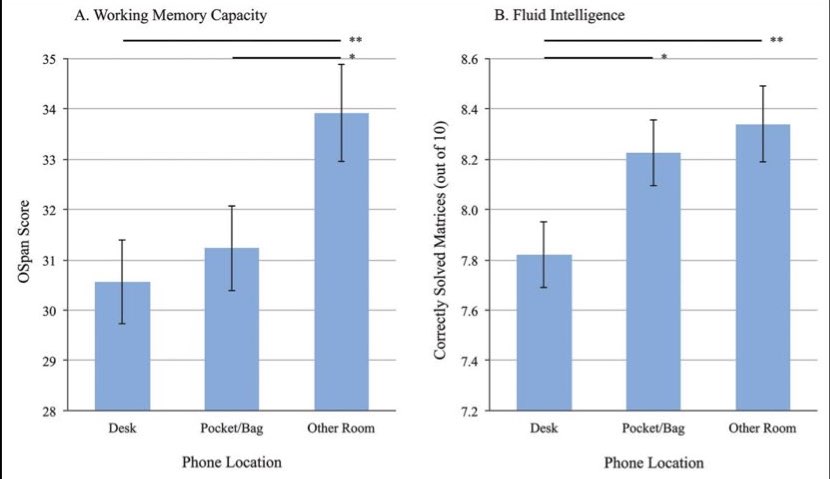In addition to my inquiry project, I’ve also been researching another tech-related topic of inquiry this semester. Cellphones are a hot-buttoned issue amongst contemporary teachers and are frequently cited as the greatest post-millennial change in the classroom. With the world now at their finger tips, students are struggling more than ever to remain focused in class; however, should teachers really ban cellphones? or should they be reinventing student habits around their mobile devices? These are some questions my group decided to tackle for our tech-inquiry project. I have provided my section of the presentation below–an argument to ban cellphones from the classroom. This argument doesn’t necessarily represent my personal opinion; however, my group thought it important to represent both sides of the argument. Here’s what I came up with:
Okay, so for my portion of the presentation, I will be arguing that cellphones should not be allowed in the high school classroom. I’ve consulted a number of studies and academic resources, which all seem to point to the detrimental effects of cellphones on attention and overall learning. While I do recognize that cellphones have the potential to compliment education, they most typically function as impediment and should be banned from classrooms, unless students have a medical condition or require some form of prescribed learning assistance.
I recognize that this is probably a less popular argument amongst this cohort. We’ve been talking quite a lot about the useful applications of cellphones and technology in the classroom—their multimodality, easy access to research, and potential to bridge the gaps between student and teacher experience. However, I think it’s important that we consider some of their negative effects as well.
So, to keep things simple, I’ve decided to address two questions that I frequently hear people ask when the topic of a cellphone ban comes up in conversation:
- Do cellphones really impede learning that much?
- Why do we have to go with a full ban? What about cellphone breaks?
And to properly indoctrinate you, I’ve come up with two catchy slogans that answer these questions:
- Bans bring results!
- Presence is menace!
I’m going to take a look at two prominent research articles that support these two slogans and explain why cellphones don’t belong in the high school classroom.
For the first question: Do cellphones really impede learning that much?
Well, a recent study performed by Louis-Philippe Beland and Richard Murphy on UK high schools argues that they do! In their study, Beland and Murphy analyzed the test scores from 91 Secondary Schools in the UK before and after cellphone bans during a ten-year period. It’s important to note that the UK has no firm cellphone policy for schools, and so, each of these schools instituted its own ban at different times throughout this ten year period. They found that after a cellphone ban, the student average on tests improved by 7% and even jumped by, as much as, 14% amongst underachieving students. While Beland and Murphy’s study represents as natural experiment, and therefore could involve other variables, there appears to be a strong correlation between cellphone bans and student academic success. So, at least for schools in the UK, Bans bring results!
Moving on to our second question: “A Ban just seems too harsh. What about cellphone breaks?”
I don’t know about you, but I’ve heard this option brought up a lot and it seems like the more diplomatic approach. Students are encouraged to develop healthy cellphone habits, where they can moderate their use and learn to only check their devices at prescribed intervals. However, does the research back it up?
 Remember, presence is menace! Another more recent study performed by Adrian F. Ward and a bunch of other researchers, argues that, “the mere presence of one’s own smartphone reduces available cognitive capacity.” They coined this funky term, “Brain Drain,” which refers to a stimulus that occupies the limited attention capacity of an individual and leaves less overall thinking capacity for other tasks. So, the obvious example is, if your phone is visible on your desk while you’re doing homework, even if it’s on silent with no vibration, there will always be part of your brain that’s thinking about the phone and not your homework, which you’re not even really conscious of.
Remember, presence is menace! Another more recent study performed by Adrian F. Ward and a bunch of other researchers, argues that, “the mere presence of one’s own smartphone reduces available cognitive capacity.” They coined this funky term, “Brain Drain,” which refers to a stimulus that occupies the limited attention capacity of an individual and leaves less overall thinking capacity for other tasks. So, the obvious example is, if your phone is visible on your desk while you’re doing homework, even if it’s on silent with no vibration, there will always be part of your brain that’s thinking about the phone and not your homework, which you’re not even really conscious of.
So, Ward and his colleagues tested over 500 university students in a standard classroom environment. He tested them using two basic tests that measured “working memory,” so that on the go memory we talked about in Cindy’s class which can remember 5-9 things for maximum 30 secs, and also “fluid intelligence,” which refers to sort of your street smarts or on-the-go reasoning skills. They had three sample groups, one group with their phones in another room, one group with their phone in a pocket or handbag (on silent), and one with their phone on their desk face down. Which group do we think performed the best? You guessed it, the first group.
Interesting to note, is that Ward et al. also asked the test subjects to fill out a questionnaire afterwards, where they rated their level of attention on the tasks at hand and even, how often they thought about their cellphones. Interestingly, they all replied in the same way, writing that they didn’t think about they’re cellphones at all. Ward et al. therefore argue that our attention to our phones might be unconscious or so fleeting that we don’t even recognize our attention is being broken; however, the effect on memory performance and fluid intelligence is still quite evident.
So, at least for the university students in this experiment, Presence is menace!
Ward et al. even went so far as to speculate that, even for productive students, the presence of a cellphone in the classroom could compromise as much as a week’s worth of learning material.
So, thank you for listening to these arguments against cellphones. Now, we’re going to hear about some of their positive uses in the classroom from Sasha!





